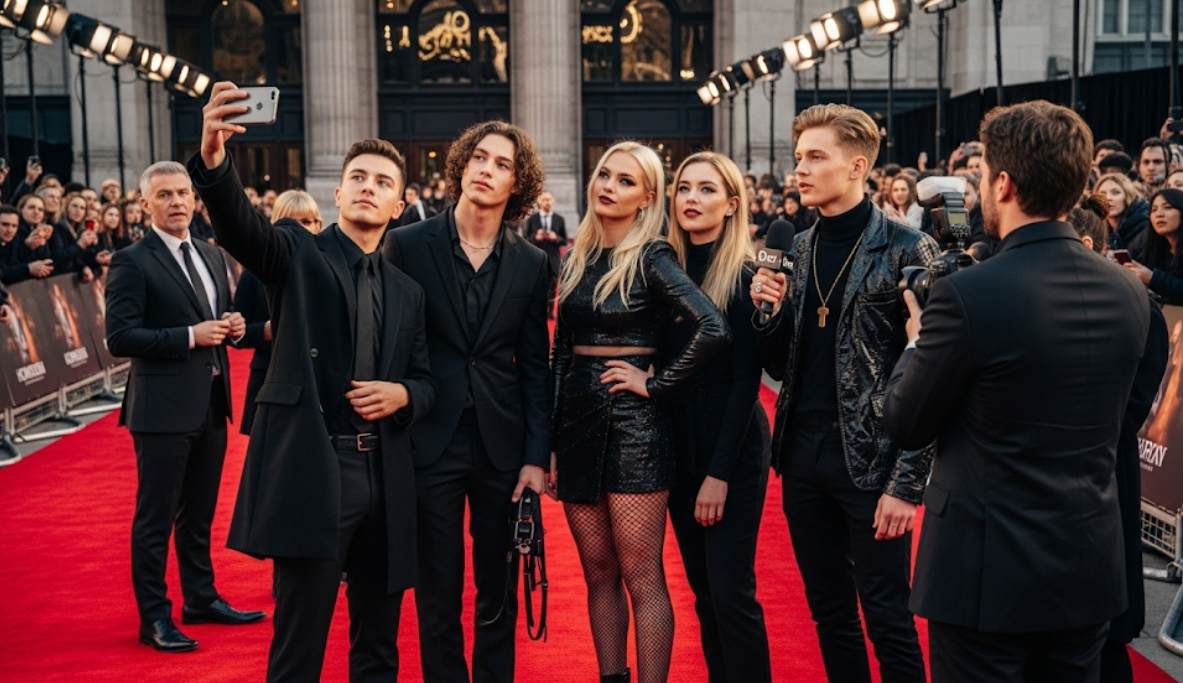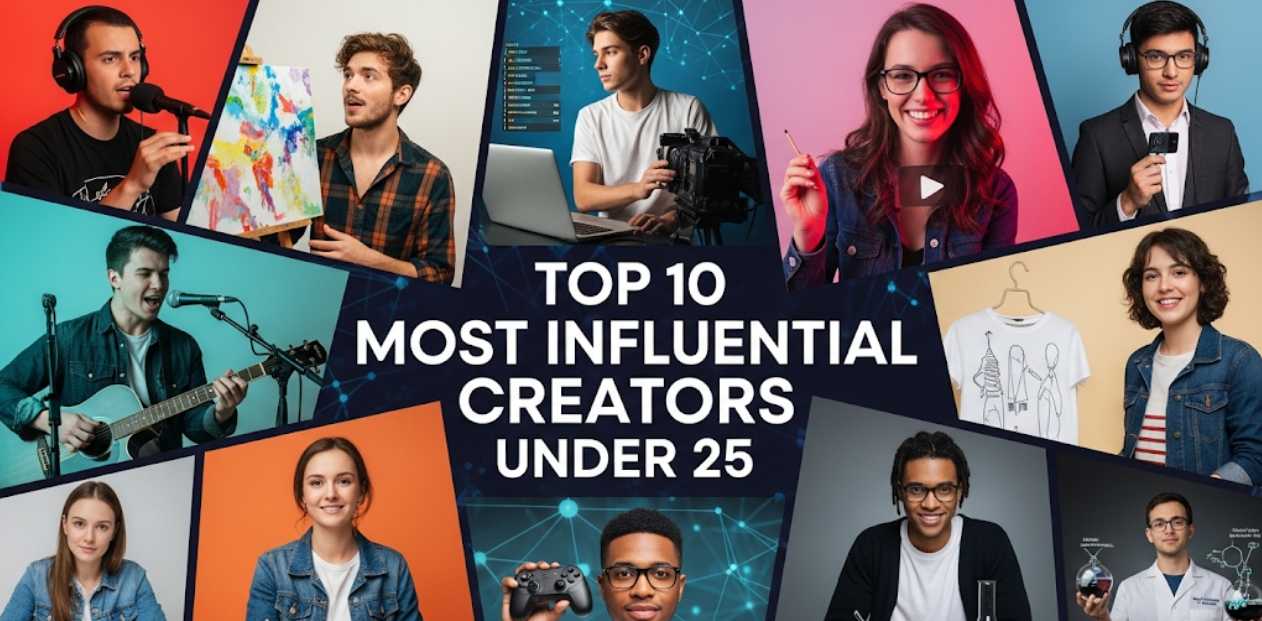Merch drops are the new main event in town. Creators have successfully weaponized fandom to create frenzies ranging from tiny-run hoodies to full-blown collabs with global brands—all the way on up to seconds-to-minutes-long sellouts. Here is a list of ten creator-led drops from the last couple of years that prove one thing: if you generate enough buzz around your product, then there won’t be any time to rest. Each drop I break down what it was, why it sold out & one lesson for creators (and brands).
Charli & Dixie D’Amelio x Hollister (almost instant): Limited Social Tourist fleeces
In its early collaborations with Charli and Dixie, Hollister set the blueprint for what influencer x retail collabs would look like: limited-run fleece and hoodies that sold through instantly on their initial drops. The sisters were also quick to leverage the fast-fire power of social engagement into real-world sales with timed exclusives and in-store appearances — utilizing an existing Hollister distribution. Teen Vogue chronicled their numerous, instantly sold out collaborations, explaining how the pair transformed teen idolatry into retail collections.
How It Sold Out: mass visibility + established retail channels + scarcity
The lesson: combine the reach of a creator with the logistics of a retailer and you get hype and scale, no shop card needed.
MrBeast “Beast” drops — quick moving limited time merchandise
The weekly limited apparel drops that MrBeast uses to sell stock from his official store have become a virtual rite of passage: teasers in video, email-list presales leading up to a main drop that sells out within minutes. Just as the store’s own messaging warns, game-store releases are hawked like tickets to an event — and some items “sell out quick.” But many creator-led stories with the right scarcity is what keeps demand high.
Why it worked: story telling + community urgency
Learnings: connect the product to the story — while limiting supply so it feels scarce.
Emma Chamberlain collabs (Chamberlain Coffee x limited collabs) — quick sell outs
Emma Chamberlain turned Chamberlain Coffee into a lifestyle brand: the moment she fused her label with limited collabs or seasonal bundles (alongside cross-promos), customers claimed stuff vanishing just like that from web shelves as well as third-party inventories. Low stock was also frequently posted in official posts as well as collaborations with high interest, showcasing retail-level sellouts are possible for creator-owned product lines.
Sold out because: powerful brand + returning clients
Teaching: Build a product people love first, then use scarcity to turn biological stimulus into immediate purchases.
Dream (Minecraft creator) — declining memberships & limited edition merchandise drops
Minecraft creators (the “MCYT” circle) turned merch into limited runs — hoodies, enamel pins and members-only items that quickly sell out. Its official shop and members-only drops have helped it capitalize on the buying power of its younger fanbase, which treats merch like currency.
Why It Sold Out: Fan Collectability + Member Benefits
This is a strong reminder of the power of gated drops for superfans that are both valuable and urgent.
K-pop idol merch & limited collabs selling for minutes
K-pop fandom is built on merchandise. Items like limited tour tees, photocard sets and pop-up store exclusives sell out within minutes and global fans battle for the most coveted items. These sort of windows, paired with global shipping restrictions and an unprecedented collector culture has helped make for some of the fastest-selling drops in entertainment retail. It also does really fast sales on TikTok and fan accounts.
Why it was successful: insane international fandom engagement + collector culture.
Moral of the story: if your fans collect something, any print run will be a cultural touchstone immediately.
Demand for nostalgic and niche content — PewDiePie limited runs
Even someone who has been creating for years with a large following can still drum up mini-frenzies. PewDiePie rare limited drops (announced on channel and socials): regularly selling out of fan-favorite designs in minutes. As someone who has been in the industry for over 12 years and with an older and loyal consumer base: these drops are established sellouts. That pattern has been indicated by social posts and official store notices.
Why it sold out: decades of trust with fans + limited editions.
Message: A creator, their legacy and regular content attract a core audience likely to purchase memorabilia long after a creator’s peak.
Sidemen / KSI drops — event driven scarcity
YouTube crews like the Sidemen and high-profile individuals including KSI have used events (concerts, boxing matches, pop-up stores) as a platform for exclusive merch drops. This excitement is turned into onsite and online instant purchases for fans going to those live events or fighting for tickets online. Tour cycles often see the Sidemen’s store pages displaying sold out notices on much of their stock.
Why sold out: event momentum + FOMO
Lesson: align drops with live moments—fans want physical proofs of attendance & participation.
Ninja / Team Ninja capsule drops — gaming influencer strategy
Gaming creators who have built lifestyle brands find success in releasing limited run capsule collections tied to seasons, streams, or collabs (e.g. Team Ninja, merch from ninja’s channel). These are quick hits the community clamours for with their desire for gamer identity merch. One of the problems is going to official stores for top streamers when they open, only to find inventory wiped out within minutes.
Why it worked: Identity signaling + niche audience buy-in.
The Moral of the Story: do limited-edition merch that tells people they’re members of a subculture—fans will jump all over it just to be in The Club.
Designer/Creator collabs (e.g. Golf Wang drops by Tyler, The Creator) — fashion-style scarcity
Though Tyler is an artist first, Golf Wang drops like influencer; limited palettes + capsule items your collector crew digests. Fashion drops of this sort often sell out within minutes and are soon available on resale marketplaces — not far from the model adopted by many creator-brand collaborations in streetwear. And it is gone faster than we can document these items on social posts and community videos.
Why it worked: fashion positioning + limited stock.
Teaching: More than a logo tee — you need a compelling aesthetic + an authentic design voice = sales.
TikTok commerce launched by micro-creator drops that sell out
Smaller creators are able to sell out easily using things like specific TikTok tutorials, authentic BTS clips, and limited runs of items such as enamel pins, small-batch hoodies, stickers from zero sales to selling out in hours. TikTok Shop and related direct-shop plugins mean impulse purchases can get a huge boost instantaneously, wiping the entire stock clean for small micro brands on the back of one viral video. Examples of similar micro-runs by creators turned into immediate sellouts have been featured in industry write-ups, as well as platform case studies.
Why It Sold Out: Virality + Low-Stock Runs
Result: small runs may perform better than larger ones if your content goes viral… plan fulfillment appropriately.
What Each of These Sellouts All Share
Here are some of the common themes across creators and genres:
Hype Engineering: Teaser content + countdowns
Limited: truly limited editions, or scarce timed releases.
Community-first storytelling: Drops feel more like fan rewards than transactions.
Smooth logistics: Having a terrible checkout is one thing… But having streamlined check-out or retail partners in line!
Cross-channel activation: Video, email, social and retail pop-ups all drive numbers around the same moment.
Both hype with no follow-through and inventory with no back story will crumble.
Quick guide: Your not so average ethical sellout (yes, a creator AND brand blend)
Don’t get it too wrong — if you underestimate, your fans will be angry. Likewise, overestimating is costly. Email presales help.
Fair access — be willing to limit releases, size holds, and limit per customer to mitigate scalpers and increase goodwill.
Develop solid post-sell-out strategies — waitlists, restock timelines or future drop dates can curb a fan feeling shut out for eternity.
Scarcity and sustainability: Rarity produces hype, be transparent on quantities.
Stay Connected — sell out updates, refund policies and shipping windows are as important as the drop itself.
Sellouts are an indicator, not a stopping point
The Sold Out Label Is A Success Signal — But Not The Finish Line. These same creators who sell in record time extend the relationship by turning a sellout into an extended moment: restock dates, community-exclusive items, or maybe even storytelling that feeds future drops. Whether it’s a K-pop photocard set disappearing in minutes, or an indie creator’s enamel pin selling out after one viral video, the key is this: fans will always pay for feelings before items. That results in the minutes-long sellouts, and opportunity to create something sustainable that lives beyond the hype of the drop.






